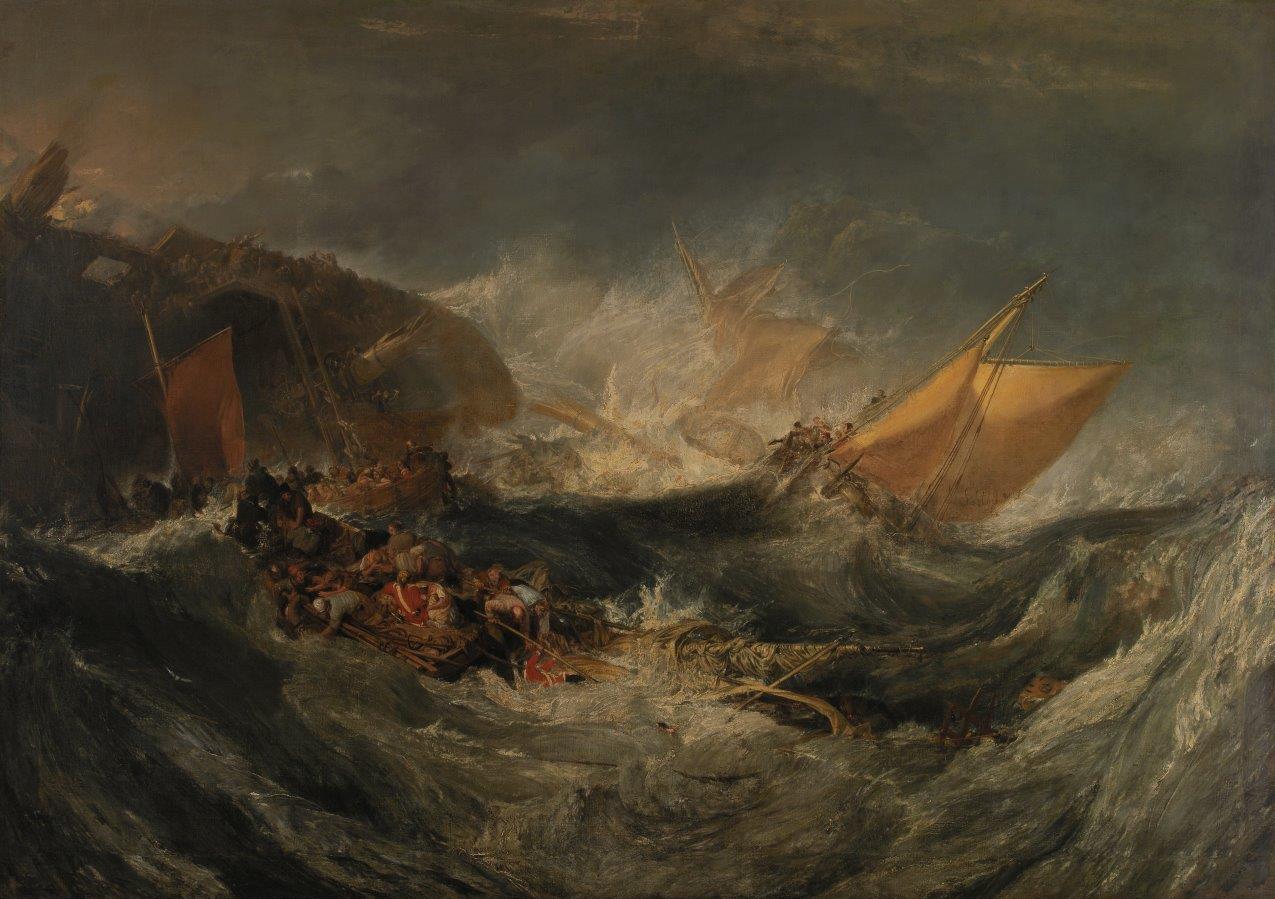
- England, c. 1810
- Oil on canvas
- Inv. 260
The Wreck of a Transport Ship
The painting is part of a series of large-scale compositions executed by Turner in the first decade of the 19th century dedicated to the depiction of natural catastrophes and sea storms, started with The Bridgewater Seapiece (private collection, on deposit at the National Gallery, London). In the past, the painting has been connected with the Minotaur, a ship which was wrecked in December 1810, however, this theory has been abandoned. This composition appears to have been influenced by The Shipwreck (Tate Britain, London) from 1805.
The construction of the space, deliberately asymmetrical and chaotic, is developed through the use of diagonals of broken masts and oars which are juxtaposed against the swirling seas. The human element, insignificant and lost, is about to surrender to the violence of the waves.
This work reveals an extreme sensibility towards nature within the finest English seascapes, in which, for a seafaring nation par excellence, the shipwreck subject was especially appreciated. Turner not only absorbs the legacy of the Dutch tradition – by Willem van de Velde, the younger, in particular – but also associates with its pictorial expression the importance of collective imagination of that period, which his contemporaries lived with true emotion and obsession.
Charles Pelham, 1st Earl of Yarborough; the Earls of Yarborough, 1846–75; Charles Alfred Worsley Pelham, 4th Earl of Yarborough, 1875–1920. Acquired by Calouste Gulbenkian through Arthur Ruck, 24 July 1920.
H. 173 cm; W. 245 cm
Butlin and Joll 1984
Martin Butlin and Evelyn Joll, The Paintings of J. M. W. Turner. New Haven, Connecticut: Yale University, 1984, vol. I, pp. 128–9, no. 210.
Sampaio 2009
Luísa Sampaio, Painting in the Calouste Gulbenkian Museum. Lisbon/Milan: Calouste Gulbenkian Museum/Skira, 2009, pp. 160–1, cat. 69.
Lisbon 2011
Calouste Gulbenkian Museum. Lisbon: Calouste Gulbenkian Museum, 2011, p. 173, cat. 152.